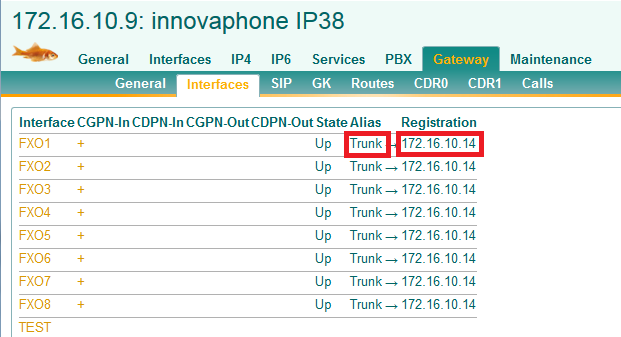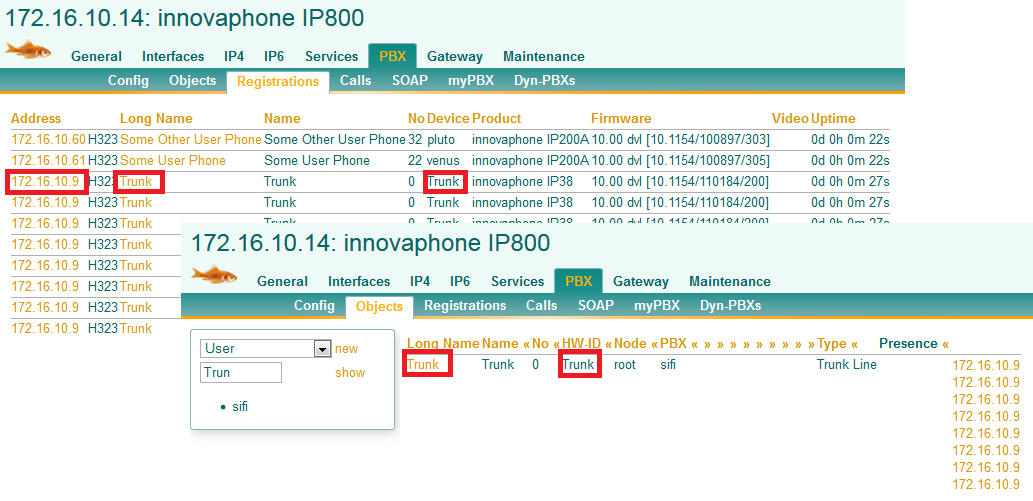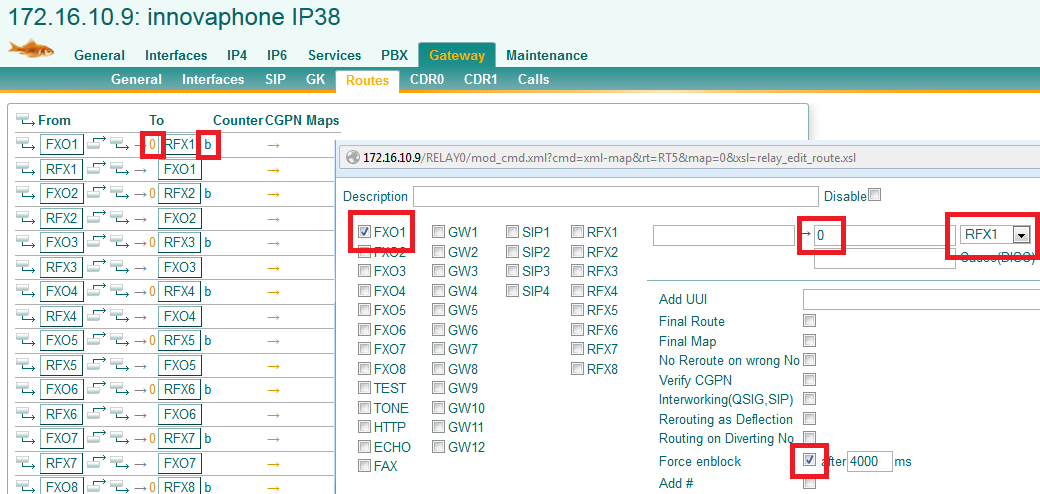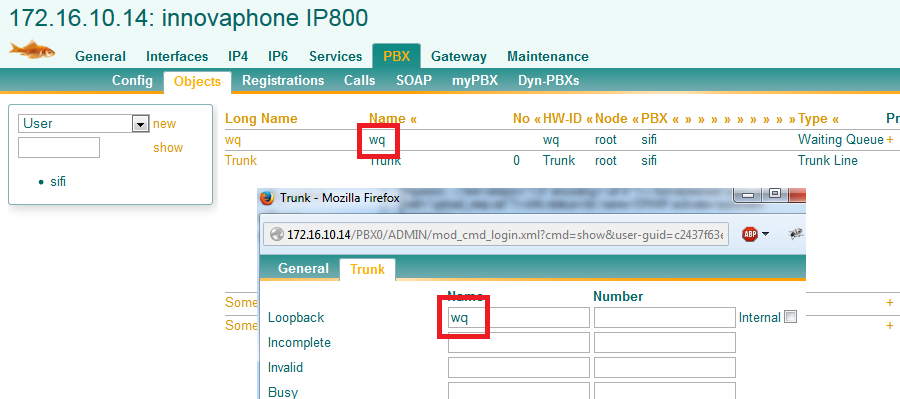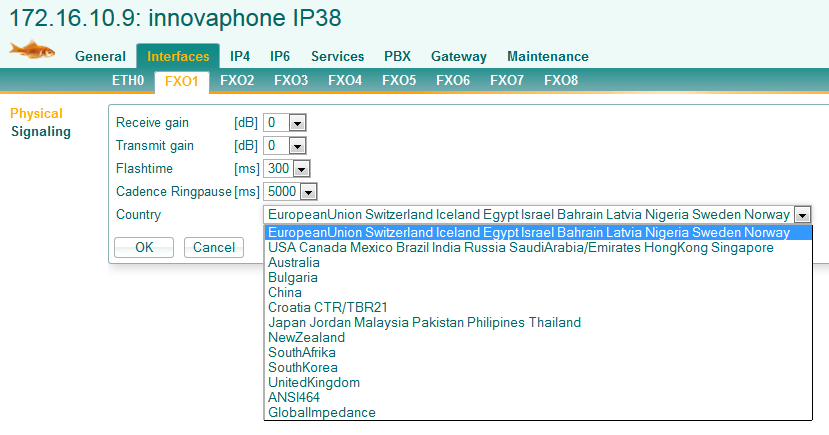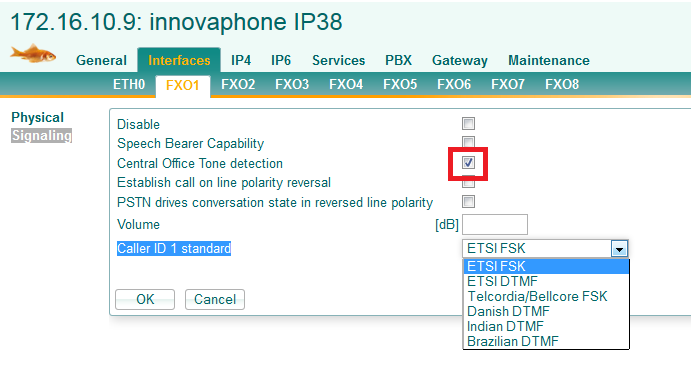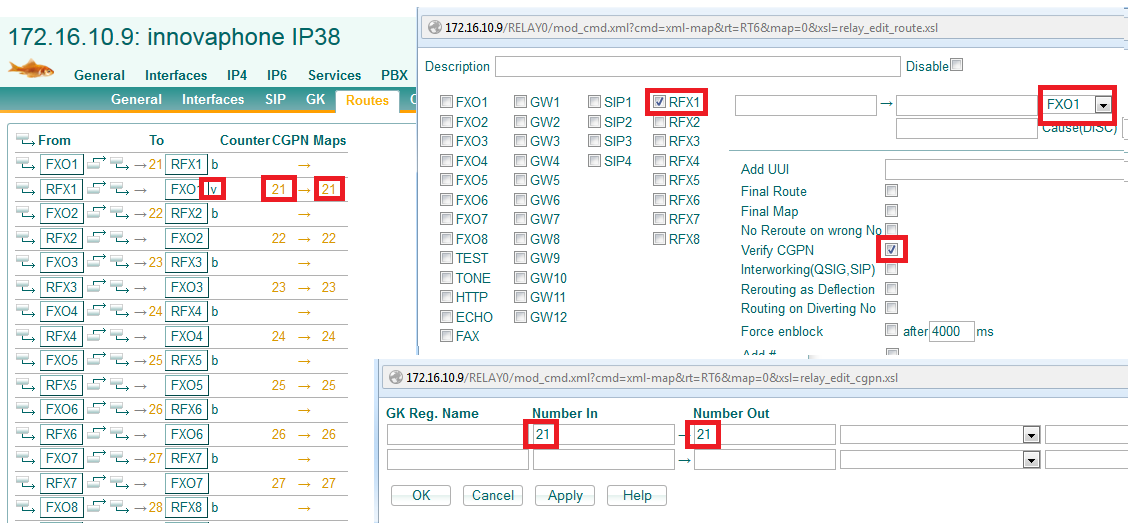Howto:Configure an analogue Trunk line with IP38 or IP311
Applies To
This information applies to
- IP 38, V10 SR 13 and later
More Information
Here is how to configure an IP38 for use with analogue trunk lines.
Configuration
Registration
The IP38/IP311's FXO interfaces can be registered to the PBX's Trunk Line object just as BRI/PRI interfaces would be:
Interface Registration
Routes
Analogue lines may provide incoming caller id information (a.k.a. CLIP). However, this information is not conveyed as part of the call setup. Instead it is transmitted in-band during the alerting phase. Outgoing caller id and incoming called party information is not supported at all. As a result, you can not do any meaningful number manipulation in the interface's Number mappings (except for the CDPN In or CDPN Out perhaps, but we recommend to set those in the routes rather, see below).
To give the IP38 a chance to collect incoming caller id data, the call must be kept in the routing engine (a.k.a. relay) long enough to receive all digits. This is best done by adding the Force enblock flag in incoming routes. This will block the call long enough (default is 4s) to collect all the CLIP digits.
As the analogue line will not provide any called party information for incoming calls, it needs to be supplied as part of the routes for incoming calls. We recommend to provide the value of the Trunk Line object's Number attribute (a.k.a. as trunk line prefix). This way, each incoming call will be treated as a call to the switchboard operator which can be handled using the trunk's Loopback setting.
Routes
Handling incoming calls
Interface Configuration
You need to select the correct Country in the Interface / FXOx / Physical tab:
Country Setting
There are various methods to signal incoming caller id information. You need to select the right one for your trunk line from the Caller ID 1 standard list in Interface / FXOx / Signaling. If you are unsure, you can safely try it out. There is no potential harm when a wrong setting is tried out.
CLIP Setting
Please note the ticked check-mark on Central Office Tone detection. Normally, your trunk line should give a dial-tone when the IP38 goes off-hook. The IP38 will wait for this tone before dialling the called party number. In rare cases, dial-tone detection may fail. You can try to disable this function then.
Some analogue lines do support some kind of signalling using line polarity reversal. If you think your analogue line supports it, you may use the Establish call on line polarity reversal and/or PSTN drives conversation state in reversed line polarity settings. This should result in improved call state detection. See Reference10:Interfaces/FXO/Signaling for more details.
Trunk Line Bundles with multiple Subscriber Numbers
The configuration shown above assumes a set of analogue lines which share the same subscriber number. That is, calls to this number will appear on any of the lines in the bundle and outgoing calls on any of them will be signalled with the same calling line id in the PSTN.
In some situations, each line of the bundle carries a distinct subscriber number though. In this case, you will probably want to send incoming calls to different destinations depending on which line the call appeared on. Also, you may want to route outgoing calls to the proper line, depending on the local extension initiating the call. This is best done by
- mapping the called party for incoming calls to the appropriate PBX extension in the routing table, depending from which line the call originated
- restricting the outgoing routes to the FXO lines to allow only calls originating from the proper local extension
Routes for fixed Line/MSN Assignement
Call forward to Extern
In this configuration, an outgoing call from an extension is always routed to the proper line, exclusively. However, if you do so, calls which have been diverted needs to be taken care of. For example, if an incoming call with CLIP from extern is forwarded to an external number (e.g. the user's mobile phone using a CFU), the calling line id will be the id of the original caller. The line selection based on the calling extension will not work thus. You will need one or more extra routes for such calls. Please note also that you cannot route such calls to the line dedicated to the forwarding user, as this line will be busy in the very moment when the call forwarding is done.
For these reasons, you should consider using the call forwarding service provided by your PSTN provider instead of the CFx features provided by the PBX.
